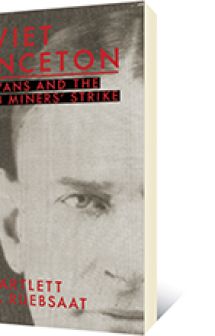It starts with a poem full of questions that resonated in my thoughts as I read this wonderful story and forced me to examine my own behaviour and actions.
| “What action for you | …Will this act |
| Would be moral | Make history progress |
| Would be true | Or allow us |
| Would be good | To slip back |
| Would be right? | Into the mud of the past?…” |
Recently I ´met´ Lindsey Collen on a conference call and although I knew her interesting letters in New Internationalist, I was not aware of her novels. I immediately found The Rape of Sita & Mutiny, both written a few years ago, absolutely timely and fascinating. Collen is an activist in Mauritius, probably the only hyphenated activist-novelist in that small island nation. Her latest letter from Mauritius in NI is about an unusual and well-organized strike by fishers.
The Rape of Sita is a like a story told to a small group of friends in an intimate space – a fire lit room, a shady grove of trees or in a tent by moonlight; it reflects how most women think, the main story, the details of the lush setting, the feelings of the characters, many asides to bring in other voices, related information and description – because to a good story teller everything is related and everything is relevant.
Even though the story is told by a man, Iqbal the Umpire, he is a respected community figure and wants to be a woman. Is that common among men who relate to female sensitivities or it is an inchoate form of womb-envy? But the book is really by a woman who understands women´s fears and vulnerability.
Sita is a powerful woman leader on a tropical island with a history of resistance. She comes from a family of independently minded warriors from the struggles against colonialism. These struggles erupt throughout the story. Sita works beside her husband, Dharma, an organizer who loves her as an equal. Much of her strength comes from her legendary mother, Doorga, who is capable of shaming men into buying her a drink, because women are paid less, and if they don´t she beats them up.
Sita grows up to be a perceptive and courageous activist. The rape, the central crisis of the story, occurs when she leaves the island for a women´s conference. Her rapist is someone she knows (most rapists are known or related to the woman), her host at travel stopover – now separated from his wife.
For years he has feared Sita, so he fantasizes about the classic means of oppressing her – sexual attack. Sita is unprepared and throughout the act, all the thoughts of self–doubt, self–loathing, and disbelief, mixed with desperate survival reactions pour through her mind even as she becomes physically numb.
She returns home to join Dharma at an important meeting and doesn´t mention her trauma; the pressure of political organizing overwhelms her private feelings. “Did she have time to announce a rape? Worse still. Did she have space? Worse still. Did she have time and space to absorb it in herself? Of course, she must have had time to tell at least herself? Why didn´t she, reader?”
She then buries her memory of rape for many years until she can barely function and even considers suicide, no one can reach her. And this reader believes she didn´t tell about the rape because women are conditioned, even strong, progressive women, into thinking their sexual humiliation is not as important as the “struggle”. We deny to ourselves that it is a vital element of the struggle.
Finally, “she drove into it with her whole self… She bumped into an illusive, heavy, dense, presence…. The hole…It was Anger. It was Rage. It was Fury.”
She knows she has buried something – and typically for women – she thinks she has buried a violent crime of her own.
“What she had found: Rage. The rage of the history of wounded womankind. And with it: Slavery. The slavery of humans historically doomed to be unable to move.”
So the story moves from universality, the symbol of one woman´s oppression becoming the symbols of many oppressions, and back to the story of Sita whom I desperately want to triumph, to shed her rage and guilt, to not let it defeat her. So I read on….
The narrator recalls that time and timing are important, Sita has created a time bomb and when the time is right she explodes her memory. She considers travelling back and murdering her rapist. “Would this act of murder stop men thinking they could rape women the world over?” She rejects that idea. Her shame and guilt, confronted, wither. When a woman in need comes to her she understands that violence and oppression can be overcome if we reach out to others, we help as we are helped. In community and union, mutual solidarity among the oppressed will triumph over evil. Even in defeat, there can be victory.
And for the narrator who wanted to be a woman, he recognizes that we are all woman and man as he is. If we love ourselves as we are, we will all have freedom and equality.

 Follow
Follow






















